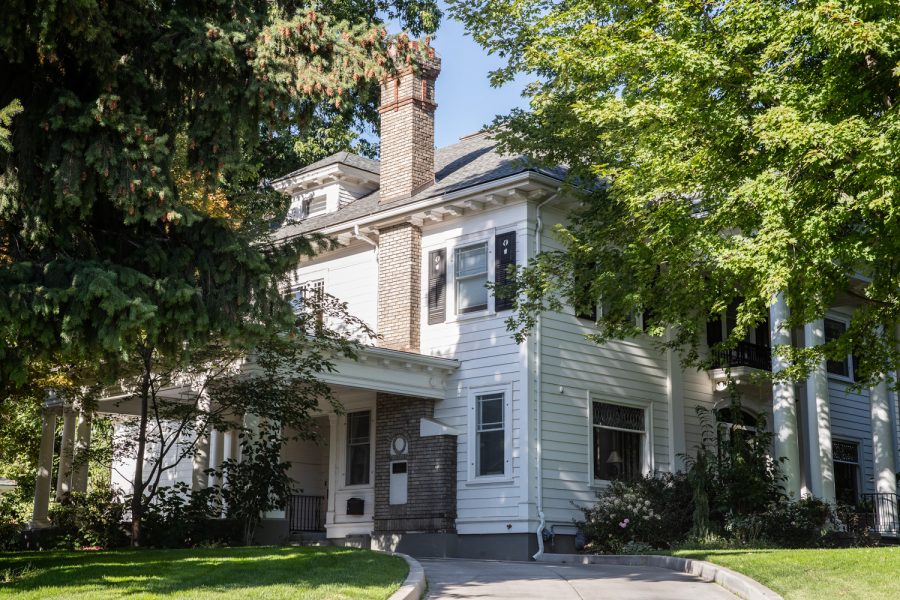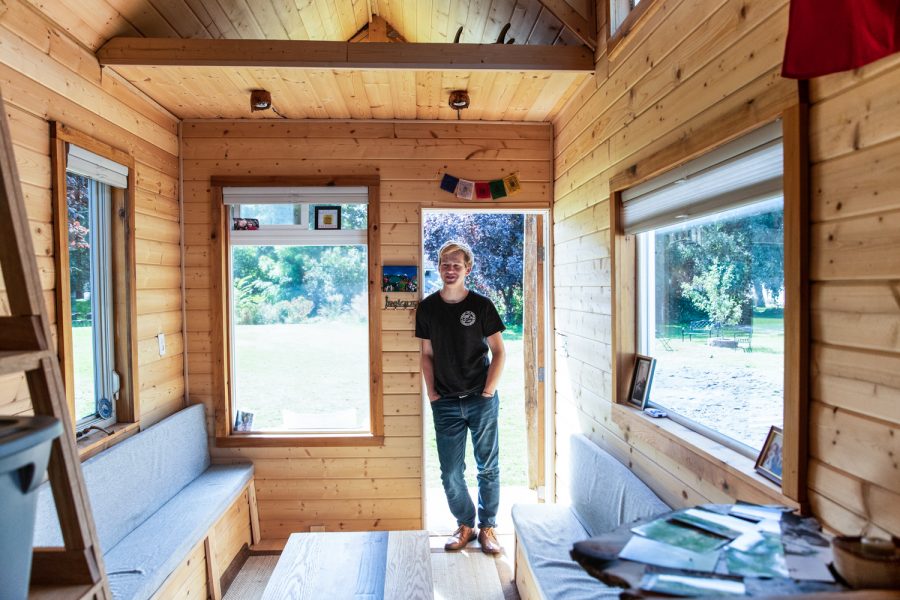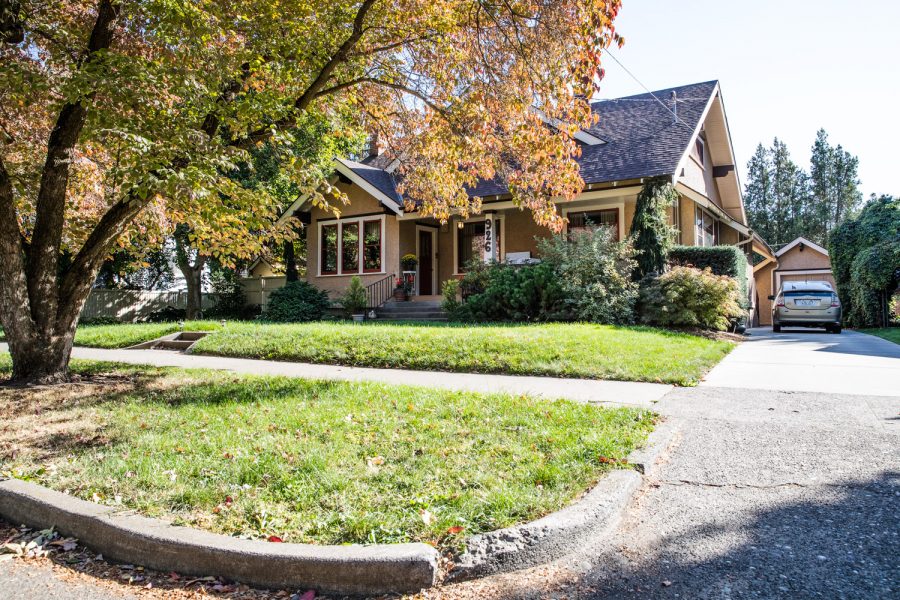Campus: Our Home
September 28, 2018
Alternative Living Situations
Audrey Hecker
The distinctive culture of the Whitman community is fostered within the unique living spaces that our students, faculty and staff create. Whether it be in one of the residence halls, a fraternity or President Murray’s own college-owned address on Alvarado Terrace, these are the places in which Whitman becomes home for many.
The foundation of a “home,” whatever meaning that may hold from one person to the next, is an important and fundamental aspect of becoming comfortable in and navigating not only college life but the rest of the world as well. The Whitman community is lucky to have within it an intertwined network of such homes, and it is a testament to our equally intertwined community that many students may recognize the homes addressed here.
Presidential Living
President Kathy Murray lives in Sherwood House at Plynton and Alvarado Terrace. She resides there with her partner Bridget, two cats and a dog.
The house itself is dedicated to the President of Whitman College, and has been just that since 1995 when former President Tom Cronin and his wife Tanya moved in. It is named after Donald and Virginia Sherwood, who donated the house to the college after Donald’s passing in 1994.
This is the start of the fourth year of President Murray’s residence in Sherwood House. Aside from the fact that “it does feel a little bit like a fishbowl sometimes,” she emphasizes her thoroughgoing love of the closeness to campus.
“I love the energy that comes [from the campus],” she said. “[It’s] just a beautiful space for having students, and for having faculty and staff and governing board members and alumns and all sorts of people into that space.”
Hosting members of the Whitman and Walla Walla community is a tradition that has been ongoing in Sherwood, and has helped to involve the outer neighborhoods with the Whitman bubble.
“[The house is] also very much a part of … the Alvarado Terrace neighborhood,” President Murray said. “Once a year we do a big neighborhood plus Whitman community event the weekend before the 4th of July, and it’s gotten bigger each year.”
As is expected, living in a college-owned house comes with its own idiosyncrasies. President Murray has, luckily, resolved some of the more pertinent ones.
“Lots of people own keys to that house … So, in our first year, we had to kind of work out a routine,” she said. “Now we don’t have any trouble with it. But we did have to work out a few little details.”
A house designated to the College President is “almost universal on small campuses, and pretty widespread on [bigger campuses],” says President Murray.
Despite this expectation and the eccentricities that come with it, President Murray does feel that both Walla Walla and the house are her home. Taj Howe
Taj Howe
SMALL SPACE; HUGE HISTORY
Across the street from Jewett Hall and just behind TKE is another home, alternative in nature as compared to President Murray’s colonial residence but similarly close to the heart of campus.
Sophomore Brayden Preskenis has already caught the eye of several news stations across Washington for his alternative living situation, who officially resides in Phi Delta Theta, but spends quiet time in his tiny house behind Phi.
Preskenis began building his tiny home when he was thirteen, after his stepmom watched a tiny house documentary and suggested he try it out.
“I was like, ‘Well … why not give it a try?’ So, a week later I went out and bought a hay trailer off of a farmer. [It had] five wheels and rusted out suspension and all that good stuff … [I] replaced it all, sanded it down, and then started building from there,” Preskenis said. “Since then, I’ve spent 1,500 hours working on the tiny house, and $14,000 building it.”
All of the construction—including interior furniture, cabinetry, and carpentry—was built by Preskenis, with some help from relatives and community members. Preskenis also worked three summer jobs to sustain the funds needed to complete the house.
Coming to Whitman this year, the goal had been to live full-time in the tiny house. Due to legal issues, however, Preskenis is not able to live in his tiny house.
“The city of Walla Walla says that it’s illegal to live in a tiny house,” he said. “So, I am officially living in Phi Delta Theta, … but then when I need a quiet place to study I come out here, and hang out and relax. It’s a great place to get away from the fraternity.”
Preskenis’ experience building and spending time in the house “definitely made [him] critically look at the stuff that [he has],” and learn to downsize when needed.
“I’ve talked to a lot of people who want to do this and have come up and asked how I did it, and how is it realistic that someone can actually live in this amount of space,” he said. “The answer is … you have to want to, but [it’s] definitely possible.”
While Preskenis technically lives in Phi Delta Theta, he identifies strongly with his tiny house as his home.
“I live, in all aspects, in Phi Delta Theta. But [the tiny house] is my home,” he said. “Having put in so much work, and putting in so much money, it’s hard for me not to see this as my home.”
Preskenis is also reminded of his family and the work they contributed to the process of building the tiny house every time he steps inside.
“I can look at some trim, and I can say, ‘Oh, my grandpa that’s from back East came out for a weekend to help me work on it,’” he said. “That’s what we did. It’s amazing to see that.”
Even despite the legal complications, Preskenis enjoys the time he does get to spend in his tiny house, and has received only positive responses and comments from peers about it.
“I feel lucky that I get to spend some time in it,” he said. “So, it’s been a process, but it’s all paid off.”

Sophomore Brayden Preskenis stands with the tiny home he has been building since he was 13.
HOME OF THE HEART
Nestled close behind Prekenis’ tiny home, Physics Professor Kurt Hoffman lives with his family on Alvarado Terrace. His closeness to campus provides for more opportunities to connect with the community and students, and even to use his home as a classroom.
“I have been able to invite students over to my house for a variety of occasions,” Professor Hoffman said. “I have held numerous Encounters classes at my home as well as receptions at the end of a semester.”
Living near fraternities has never been a problem for Professor Hoffman. While it can get noisy at times, it has minimal effect on the quality of living in the neighborhood.
“During the school year, Rush weekend and one or two other weekends at the end of the school year can get loud, but we don’t have noise problems on a weekly basis,” Professor Hoffman said. “In general, we don’t live any differently than we would if the fraternity house were not across the alley.”
Overall, Professor Hoffman deeply identifies with his house as a place of great significance for him and his family.
“This is our home in which we have raised our children, hosted family events, and made every important decision in the last 25 years,” he said.
This investigation of “the variety of spaces in which our students [and faculty] live,” as President Murray put it, reveals the unique circumstances which can contribute to the feeling of “home.” These physical spaces only represent a portion of what this entails; for some, such as President Murray, their house may not actually be owned by them, but nonetheless we create attachments within these circumstances that strengthen with time and context.
For others, home will be a synthesis of memories, such as Brayden Preskenis’ tiny house, filled with photos of his family and structural components that remind him of particular instances.
Or take Professor Hoffman, whose house and work fuse together together to create his version of home, and whose house holds numerous significances as a place of teaching, learning and growing.
All of these cases, among many others, outline what home is and how it is created on the Whitman campus. The sense of home at Whitman is broad and varies greatly in definition, but we all share the distinctive qualities that are required to form a home. Regardless of how you define it, home is a place you choose—and for many, that home is Whitman.

Physics Professor Kurt Hoffman and Associate Director of Off Campus Studies Barbara Hoffman’s home on Alvarado Terrace. Professor Hoffman has many memories rooted in this house.





